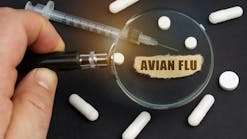Medical Laboratory Observer has a new expert available to answer our readers’ questions! Chuck is board-certified in Infectious Diseases and has a sub-specialty certification in HIV Medicine. He currently serves as the Chief Medical Officer for Siemens Healthcare Diagnostics, Siemens Healthineers. At Siemens Healthineers, Chuck oversees clinical product development, evidence generation, and externally facing medical/scientific activities as well as contributing to innovation efforts.
Prior to joining Siemens Healthineers, Chuck led the Medical and Scientific Affairs function for the Integrated Diagnostic Solutions business at Becton Dickinson. In this position, he oversaw evidence generation and clinical development of a broad range of products including sample collection devices as well as numerous infectious disease diagnostics for diseases such as SARS-CoV-2, tuberculosis, sepsis, sexually transmitted infections, bacterial vaginosis, cervical cancer screening, among others.
Chuck’s clinical interest is HIV medicine, and he currently provides clinical care to under-served patients at the federally qualified community health center, Greater Baden Medical Services. He also serves on the mid-Atlantic Steering Committee of the American Academy of HIV Medicine.
Chuck graduated from Georgetown University Medical School after which he completed his Internal Medicine residency at Strong Memorial Hospital, University of Rochester.
Below, we asked Chuck a few questions. Next month, please send your questions to:
The use of molecular tests for infectious diseases have increased dramatically the past few years. How do you see molecular tests improving patient care in the future?
Molecular tests for infectious diseases have made a dramatic impact on the diagnosis and management of a broad range of infectious diseases. These tests are now commonly utilized for a number of clinical purposes including, among many others, the early and sensitive diagnosis of targeted pathogens; the determination of antimicrobial resistance markers to guide antimicrobial selection; and for infection control practices, the multiplexed diagnostic evaluation in syndromic settings; quantitative assessment of therapeutic viral control in chronic blood-borne infections; and even uses like cancer prevention, screening, and risk assessment as with HPV in cervical cancer. The impact of the broad application of this technology on a population level cannot be understated.
Despite the already significant advances that have been made, there are still plenty of opportunities for further improvement in patient care in the future through continued advances in molecular technology. One example is the introduction of molecular diagnostic methods at the point-of-care which, when clinically appropriate, may reduce time to diagnosis and provide more timely actionable information to guide patient management. In some ways, the recent experience with the COVID-19 pandemic has likely accelerated the development and introduction of molecular POC technologies, which may be leveraged more broadly in the future for pathogens other than SARS-CoV-2.
Another example is related to the use of molecular technology to assess immune response to infection, which may be able to provide unique information such organism type (virus versus bacteria) and infection severity and progression risk (as with sepsis). These kinds of diagnostics have the potential to add valuable actionable information to the current patient management decision making process that today is sometimes forced to rely on less accurate clinical information when making empiric management decisions in certain situations.
What are some of the major challenges you hear from laboratory directors around the country?
It’s a common story that along with all of the benefits and value of new and evolving technologies, there are also accompanying challenges. In the space of molecular diagnostics for infectious diseases, this is no exception. One example of an associated challenge involves the generation of positive results for multiple organisms when running large multiplexed diagnostic assays. When multiple positive results are reported for more than one organism, clinicians may have difficulty sorting out true pathogen from colonizer from transient sub-clinical positive. This can lead to unintended consequences such as additional diagnostic testing or treatment of incorrect organism. Clinicians may reach out to the laboratory in an attempt to better understand the diagnostic assay’s performance characteristics to aid in their interpretation and decision making.
Another example might be discordance with traditional methods. In this case, when a molecular test is utilized to generate a rapid result in combination with subsequent slower, traditional turnaround methods (such as growth-based detection and susceptibility testing), it can happen that the two methods generate results that may be contradictory to each other. Clinicians are left to wonder which test result is the correct one.
Yet another, more practical, challenge has to do with the cost-benefit equation surrounding the implementation of molecular diagnostic techniques. This is particularly relevant when the molecular diagnostic method has not reached the point where it can entirely displace the traditional microbiological diagnostic methods and therefore, its cost becomes an add-on expense to the baseline cost of running the traditional microbiologic diagnostic methods. For this challenge, laboratories and stakeholders are often challenged to determine when there is sufficient clinical utility and value to patient care to justify the incremental cost increase of running the additional molecular testing.
What solutions are laboratories implementing for these challenges?
Perhaps the most important solution involves working closely with key stakeholders and especially with the end users of these diagnostics such as antimicrobial stewardship teams or treating clinicians when introducing new test technologies. Such collaboration will allow for all cross-functional parties to arrive at a shared common perspective regarding the capabilities, utility, interpretation, and ultimate value of new molecular diagnostics. This will ensure that the adoption of new molecular diagnostics occurs in a way that leads to optimal utilization and maximal impact to patient outcomes.





